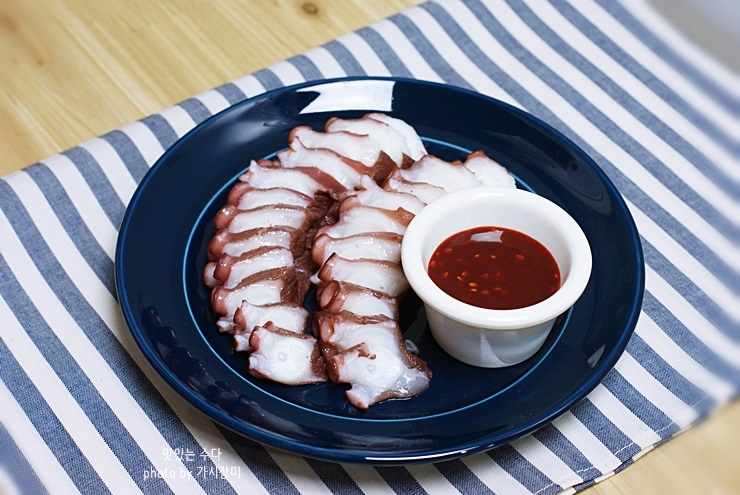
Chewy octopus soup, how to boil octopus!
Isn't it fantastic if you dip the chewy octopus sashimi in red pepper paste?
It's the table of thorns last night.
Hahaha
Octopus, which is in season from November to April, is rich in taurine, so it is boiled as it is or used as an ingredient for various dishes,
In particular, my family's family is a child (?) who is not excluded from holidays and ancestral rites.
Even if you cut a big octopus leg apart, the big plate is full
4 serving
Within 90 minutes
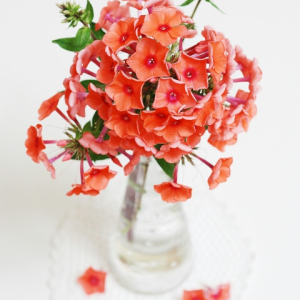
가시장미
- Ingredients
-
-
an octopus2ea
-
a thick salt3TS
-
Flour4TS
-
Water2L
-
Radish2piece
-
- Cooking Steps
-
STEP 1/8Flip the head of the octopus or use scissors to remove the intestines and eyes. Be careful not to burst the ink while removing the intestines. I carefully removed one of them. Also, lift your legs and remove the inner part of the eye.
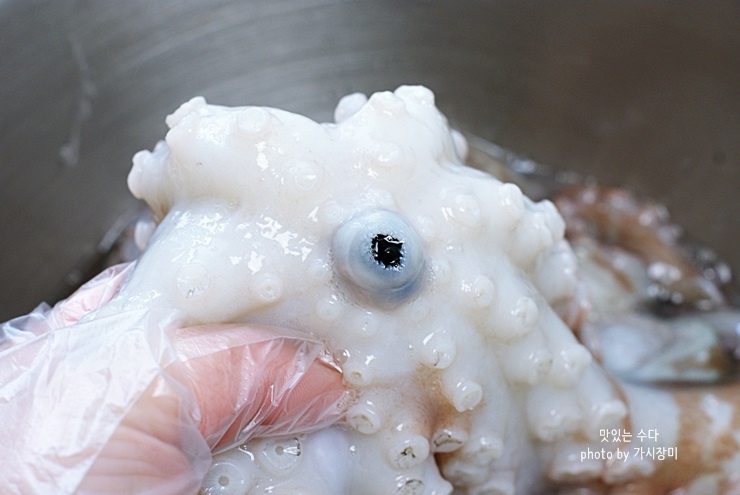 STEP 2/8Add 3 tablespoons of thick salt and rub to remove foreign substances from the sucker, add 4 tablespoons of flour, knead until foam no longer comes out, and rinse until clear water comes out.
STEP 2/8Add 3 tablespoons of thick salt and rub to remove foreign substances from the sucker, add 4 tablespoons of flour, knead until foam no longer comes out, and rinse until clear water comes out.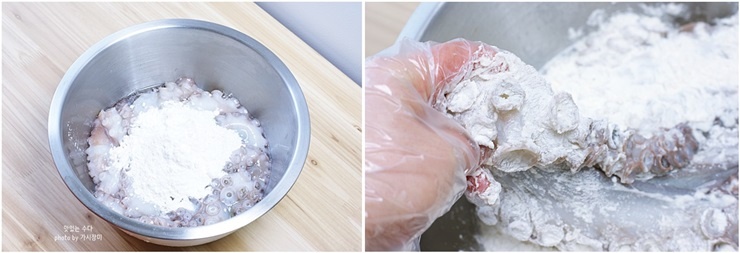 STEP 3/8Drain the cleanly washed octopus on a sieve.
STEP 3/8Drain the cleanly washed octopus on a sieve. STEP 4/8Boil 2L of octopus water and 2 pieces of radish in a pot. When the water boils, boil it for about 10 more minutes,
STEP 4/8Boil 2L of octopus water and 2 pieces of radish in a pot. When the water boils, boil it for about 10 more minutes,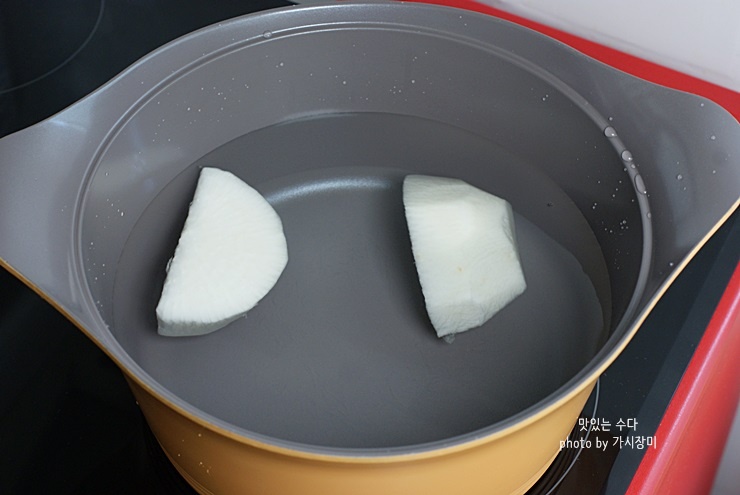 STEP 5/8Hold the dried octopus, soak your feet in boiling water 3 to 4 times, repeat, put it in a pot, cover it, boil it for 6 to 10 minutes (depending on the size of the octopus), turn off the heat, wait for about 10 minutes, and strain it through a sieve.
STEP 5/8Hold the dried octopus, soak your feet in boiling water 3 to 4 times, repeat, put it in a pot, cover it, boil it for 6 to 10 minutes (depending on the size of the octopus), turn off the heat, wait for about 10 minutes, and strain it through a sieve. STEP 6/8The reason why the octopus was soaked and removed three to four times without immediately putting it in boiling water is to make the octopus legs in the picture above roll up beautifully like this way.
STEP 6/8The reason why the octopus was soaked and removed three to four times without immediately putting it in boiling water is to make the octopus legs in the picture above roll up beautifully like this way.
It's pretty, right? You don't have to do it when you just eat it.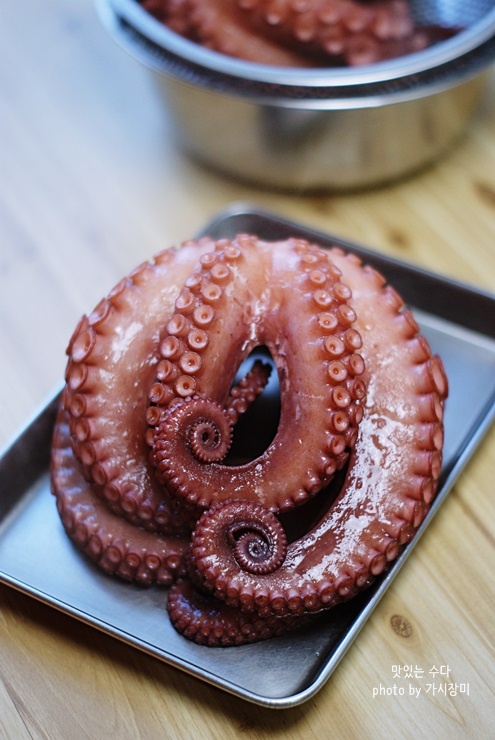 STEP 7/8Boiled octopus can be stored for up to 15 days if it is removed from each leg, wrapped in plastic wrap, and frozen in an airtight container for the freezer.
STEP 7/8Boiled octopus can be stored for up to 15 days if it is removed from each leg, wrapped in plastic wrap, and frozen in an airtight container for the freezer.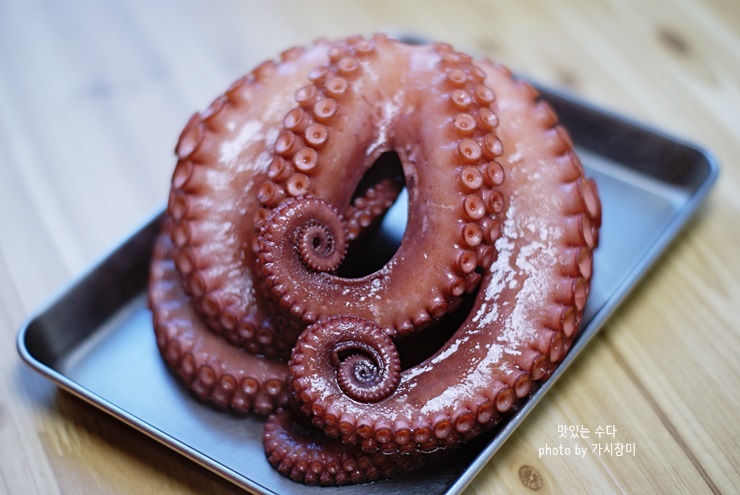 STEP 8/8You just have to take out as much as you want to eat and put all the thorn roses in the freezer, but you just dipped them in red pepper paste and ate them all;;
STEP 8/8You just have to take out as much as you want to eat and put all the thorn roses in the freezer, but you just dipped them in red pepper paste and ate them all;; ---> When I was young, my mother always added radish when boiling octopus, so I asked why she added it, and she said, "If you add radish, the octopus becomes softer and softer." That's why when I boil octopus, I always put radish in it. ---> Octopus's abundant taurine effectively inhibits neutral lipids and cholesterol in the blood, helps detoxify the liver, is effective in recovering from fatigue, and is also good for dieting, so it would be good to take it during this season. ^
---> When I was young, my mother always added radish when boiling octopus, so I asked why she added it, and she said, "If you add radish, the octopus becomes softer and softer." That's why when I boil octopus, I always put radish in it. ---> Octopus's abundant taurine effectively inhibits neutral lipids and cholesterol in the blood, helps detoxify the liver, is effective in recovering from fatigue, and is also good for dieting, so it would be good to take it during this season. ^
- Cooking review
-
5.00score
-
 392*****scoreYou're the best. Thank you2022-05-22 21:56
392*****scoreYou're the best. Thank you2022-05-22 21:56 -

 798*****scoreI really enjoyed the food! Thank you.2020-06-05 10:11
798*****scoreI really enjoyed the food! Thank you.2020-06-05 10:11
-
- Bibimbap Recommended recipe
-
-
1
 [One bowl recipe] Tuna sprout bibimbap, sprout bibimbap, seasoni4.93(68)
[One bowl recipe] Tuna sprout bibimbap, sprout bibimbap, seasoni4.93(68) -
2
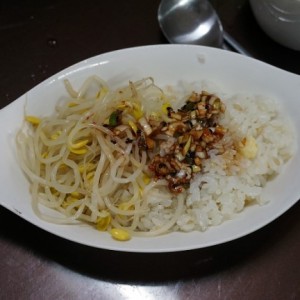 Savory and crunchy bean sprout bibimbap - imitating Jongwon Baek4.86(14)
Savory and crunchy bean sprout bibimbap - imitating Jongwon Baek4.86(14) -
3
 Vegetable Kang Doenjang & Kang Doenjang Bibimbap with potatoes a4.94(17)
Vegetable Kang Doenjang & Kang Doenjang Bibimbap with potatoes a4.94(17) -
4
 The secret of bibimjang sauce that makes bibimbap delicious5.00(10)
The secret of bibimjang sauce that makes bibimbap delicious5.00(10)
-
- stir-fried Rice Cake Recommended recipe
-
-
1
 Soy Sauce Tteokboki - How to make Soy Sauce Tteokboki4.90(91)
Soy Sauce Tteokboki - How to make Soy Sauce Tteokboki4.90(91) -
2
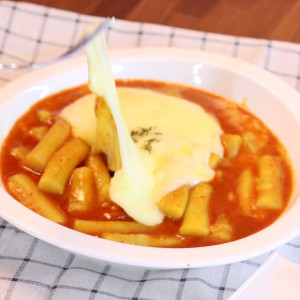 Making Shinjeon Tteokbokki :: 90% synchronized seasoning recipe4.90(52)
Making Shinjeon Tteokbokki :: 90% synchronized seasoning recipe4.90(52) -
3
 [Self-cooking] Making super simple tteokbokki + honey flavor is4.92(508)
[Self-cooking] Making super simple tteokbokki + honey flavor is4.92(508) -
4
 Jjajang tteokbokki. A good jjajang powder dish for a kid's snack4.91(120)
Jjajang tteokbokki. A good jjajang powder dish for a kid's snack4.91(120)
-